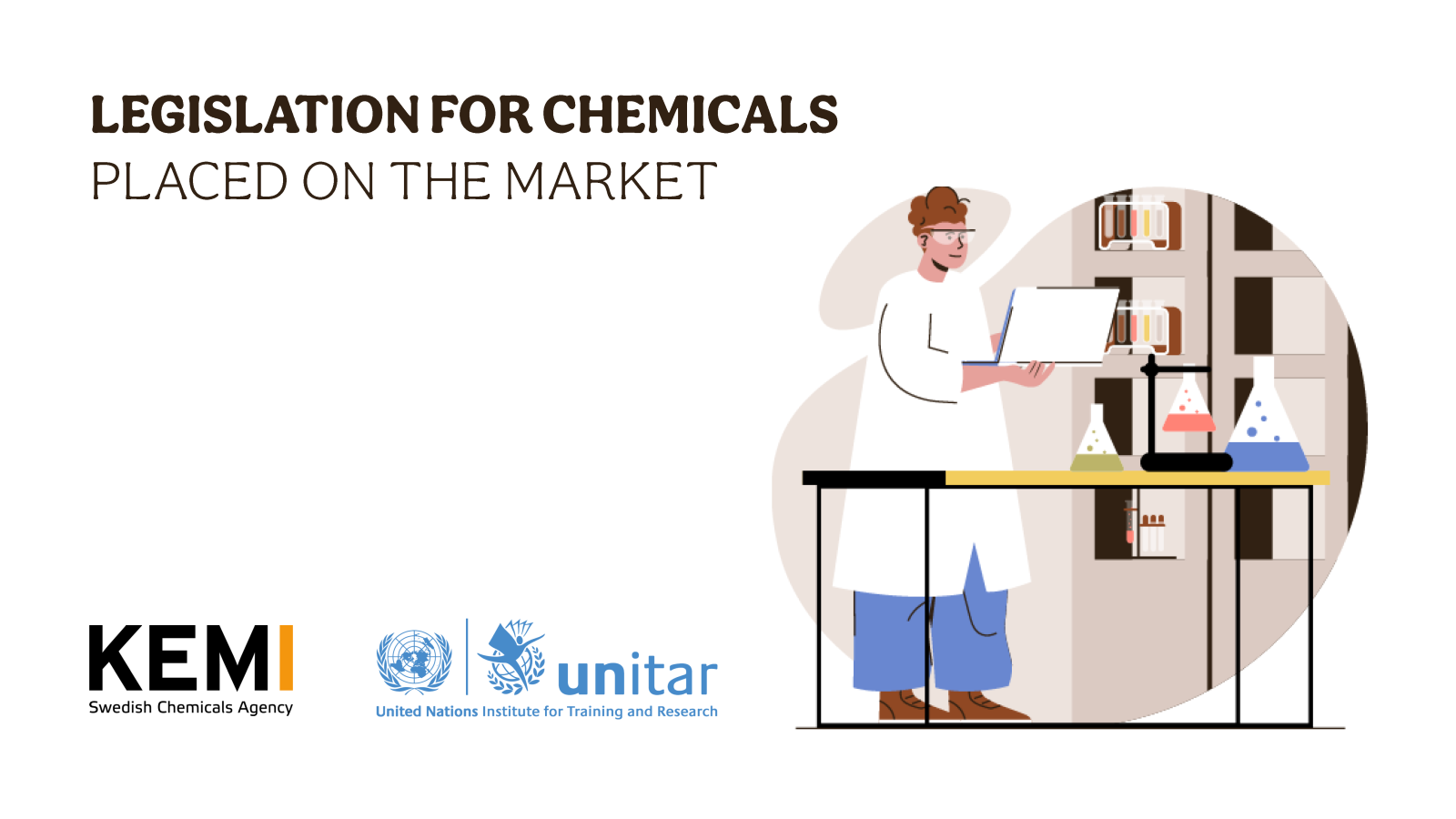
Legislation for Chemicals Placed on the Market
KEMI
After taking the course, participants will be able to:
- Describe the basis for chemicals legislation focusing on placing chemicals on the market
- Explain the possible design and content of the legislation
- Explain the difference between primary and secondary legislation
- Compare and explain the consequences of different ways to divide responsibilities between the public and private sectors
- Describe how international agreements can support the introduction of provisions and contribute to national legislation
This course is based on the Swedish Chemical Agency’s - KemI - publication on “Legislation for chemicals placed on the market”, one of a series of documents developed to complement the UNEP Guidance on the Development of Legal and Institutional Infrastructures and Measures for Recovering Costs of National Administration (LIRA Guidance) by giving more detailed guidance in different areas.
This aim of this course is to provide guidance to participants in their efforts to set up efficient legal frameworks to support the sound management of chemicals. It focuses on legislation for preventive chemicals control and is directed towards the placing of chemicals on the market, with the inclusion of examples of possible legal texts.
Module 1 - Why legislation is important?
Content
1. Value of legislation: protecting human health and the environment while recognizing the benefits chemicals can provide
2. Need to minimize and manage risks from legislation
3. Chemicals legislation can contribute to a level playing field for companies, and to facilitate trade between countries
Module 2 - Chemicals legislation and related pieces of legislation
Content
1. The many areas of sound chemicals management
2. Product-oriented risk management: focusing on the chemicals placed on the market
3. The rationale for coherent legislation for chemicals placed on the market
Module 3 -Placing obligations in primary and secondary legislation
Content
1. Benefits of placing some responsibilities in a primary law and other responsibilities in secondary legislation
Module 4 - Main content of a chemicals law (content of legislation for chemicals placed on the market)
Content
1. Aim and scope of legislation on chemicals placed on the market
2. Responsibilities and tasks of government authorities
3. Delegation
4. Boundaries between legislation
5. Definitions
6. Responsibilities and obligations of companies and others handling chemicals
7. Limitations on trade and use
8. Registers
9. Reporting
10. Confidentiality
11. Sanctions
12. Entry into force and application, transitional periods
The course, about 45 minutes to complete, is self-paced and adapted to the schedule of full-time working professionals. Participants are provided with the opportunity to learn through various experiences: absorb (read); interact (activity); and reflect (relate to one’s own reality). This includes videos, interactive lessons, reading materials and quizzes.
Despite being self-standing, the 4 modules of the course must be completed in order.
Each module concludes with a quiz which will assess the knowledge learners will acquire. If learners pass the quiz with a 100% mark, a certificate of completion will be issued to them.
Participants will be requested to provide feedback on the course by filling in a feedback form after completing all the modules, accessible anytime.
This course is targeted at national chemicals officials but is intended to be of interest to a broad range of sectors and stakeholders involved in chemicals management at the national level (e.g. agriculture, environment, health, labour, trade and industry, transport).
It may be of particular relevance to national officials in a position to mandate development of legislation and officials with the task of drafting national legislation.
The course can be completed on any computer (Windows and Mac) or mobile device. Any internet browser is compatible as long as it has been updated to its latest version.

